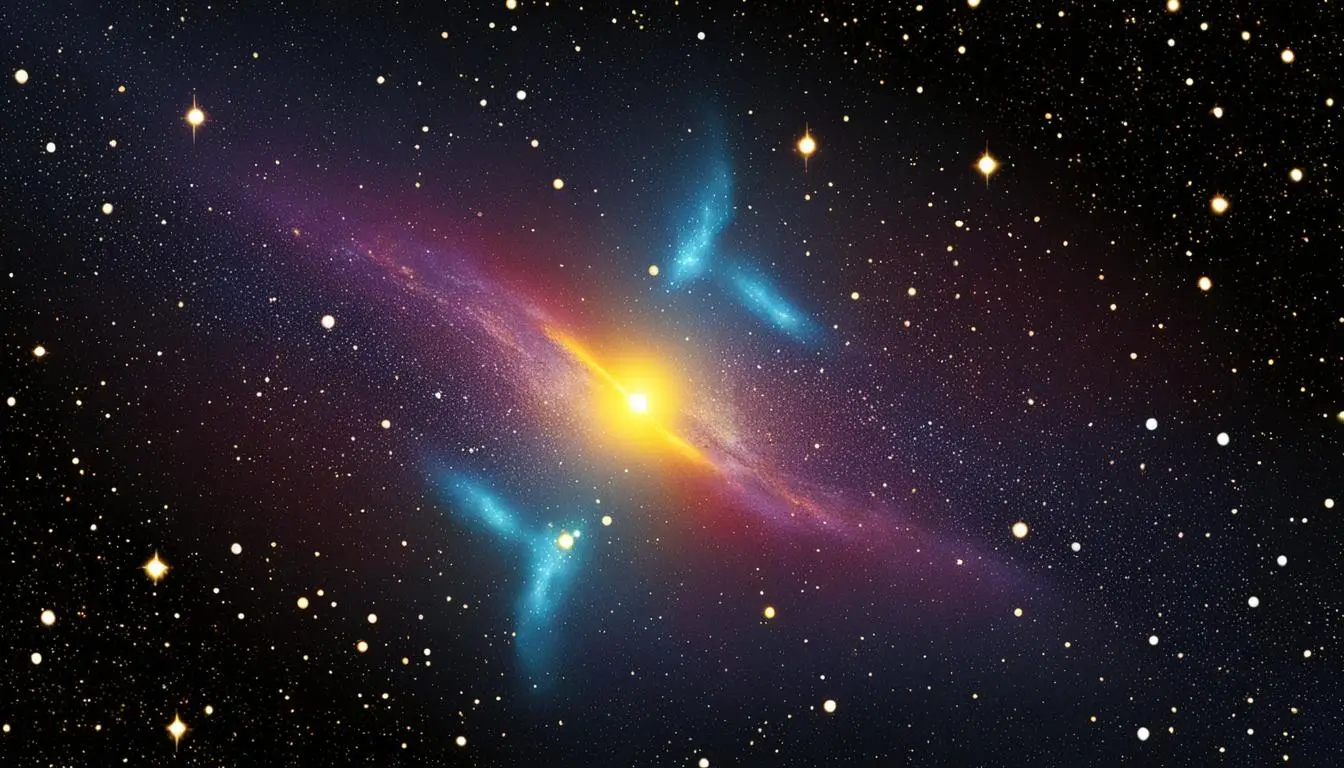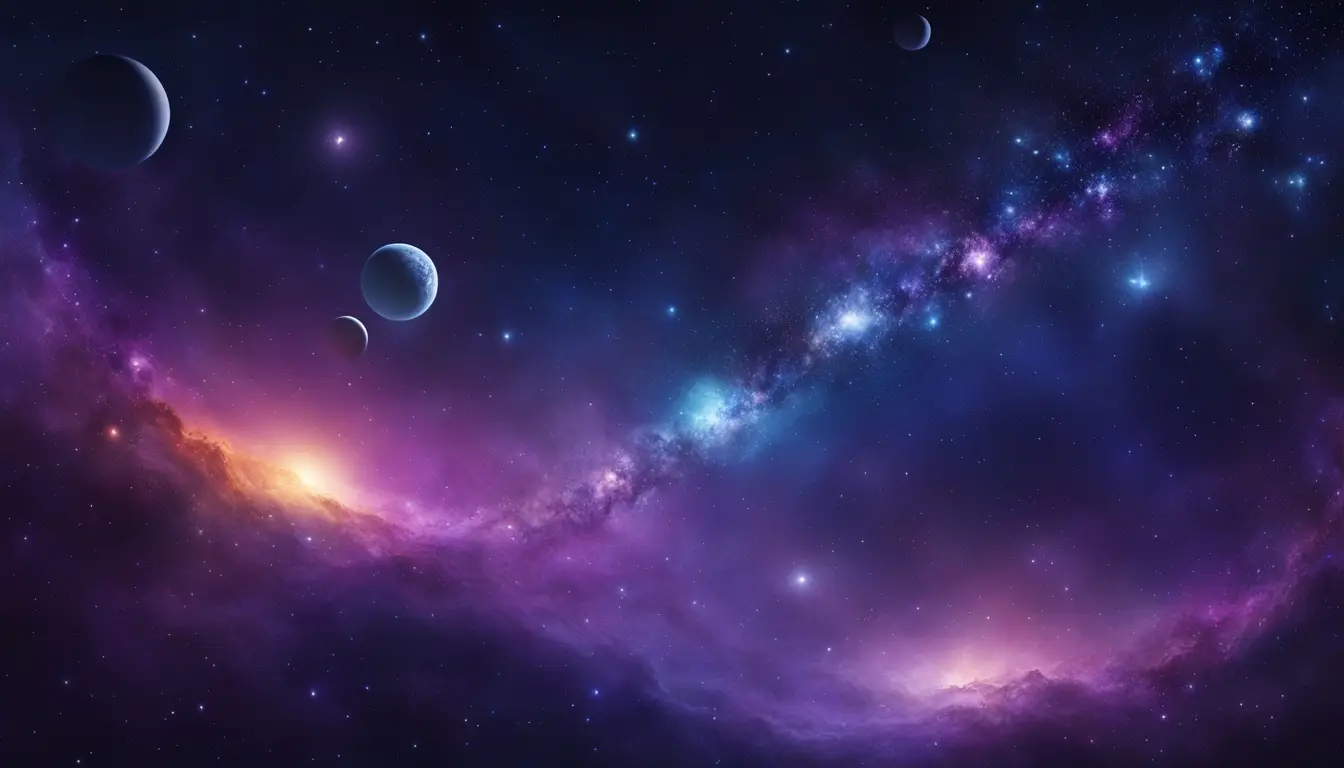Do you know that in addition to the galaxies or huge star clusters holding millions or billions of stars and planets, there are smaller systems? We call them star systems, and star systems hold only a limited number of stars orbiting each other. When you look up from the Earth, each star might be part of a star system. What is a star system, and how does it differ from galaxies or star clusters?
Check this out, too: How are Stars Classified? Star Classification Guide

A star system is a small group of stars held together by gravity. These systems are smaller than the big clusters in galaxies. They can have two or more stars and sometimes planets, asteroids, and other objects.
Our Solar System is a star system with the Sun at its center. But we’re not the only ones out there. The Milky Way Galaxy, our home, has between 200 and 400 billion stars. Many of these stars are in multiple star systems. If you watched the 3 Body Problem on Netflix, that’s a 3-star system, for example. It’s three celestial objects with similar masses (planets, stars, or suns) exerting force on each other and orbiting each other.
Key Takeaways
- Star systems are small groups of stars held together by gravity
- They can contain two or more stars and potentially planets
- Star systems differ from larger star clusters and galaxies
- The Milky Way contains an estimated 200-400 billion stars
- Multiple star systems are common in our galaxy
What Is a Star System: Definition and Basics
A star system is a group of stars held together by gravity. These systems can have from 2 stars to many stars. The most common type is a binary star system, where two stars move around each other. Physical double stars are another name for binary systems that are truly connected by gravity.
As you can see, gravity is key in star systems because gravity keeps them within each other’s orbit. Stars move around a common center of mass, and the strength of gravity affects how close or far apart the stars are.

Differentiating Star Systems from Star Clusters and Galaxies
Star systems are different from bigger groups like star clusters and galaxies. While a system usually has a few stars, clusters can have thousands. Galaxies have billions of stars. The main difference is the scale and how stars are connected by gravity. Also, with more celestial bodies in the picture, the complexity increases. You can’t expect the same astrophysical and physical problems in a star system with two stars and a galaxy with billions of stars and planets.
The Boundaries of a Star System
A star system ends where the stars’ gravity ends, so the boundaries are determined by the stars’ gravitational forces. Within this force, planets and objects can orbit safely. Beyond this, objects might be pulled by other stars or forces in the galaxy.
Let’s continue with the 3 Body Problem example. When there are three stars, they orbit around each other’s forces. However, since three different gravitational forces are too close, they get pulled by each other’s gravity. They end up swinging back and forth between each other’s gravitational zone. This makes them unstable, especially if a planet is affected by those stars.
Types of Star Systems: From Binary to Multiple
Star systems vary from simple pairs to complex setups. The most common type is the binary star system, where two stars orbit each other. These systems are a big part of the stars in our galaxy.
Binary Star Systems
We classify binary star systems in different ways. We can see visual binaries with telescopes and find the spectroscopic binaries by looking at their light spectra. Some binaries are so close that their brightness changes as they move around each other. We call them photometric binaries.
Triple and Quadruple Star Systems
Triple-star systems are more common than quadruple ones. In these systems, two stars often move close together, with a third star farther away. This setup helps keep the system stable – unless they are close to each other and their gravitational orbit pulls them together constantly. Quadruple star systems usually have two pairs of stars moving around a common center.

Complex Multiple Star Systems
Some star systems have five or more stars. These systems often have stars orbiting in groups. The most complex known system, Nu Scorpii, has seven stars. The more the star, the more complex it gets, not only in how it works but also in understanding these star systems.
The Diversity of Star Systems in Our Universe
Star systems in our universe are incredibly diverse. They range from simple pairs to complex groups of stars. This variety comes from differences in mass, age, and stage of evolution among stars. Stellar populations include massive blue giants and tiny red dwarfs. Some systems have stars at different life stages, like a young main sequence star with an old red giant. This mix affects planet formation and system stability.
Our solar system, with the Sun at its center, is just one example. The Sun, a yellow dwarf, has planets, moons, and other bodies around it. This setup is common but not the only one. The Milky Way galaxy, where our solar system lives, is full of star systems. It stretches 100,000 to 120,000 light-years wide and has 200 to 400 billion stars. Each star might have its own unique system. We can’t research every single one of them.
Star Evolution in Star Systems
There is a possibility for star evolution in binary and multiple star systems, which contributes to the universe’s diversity and change. The star evolution shows how stars change over time due to their size and how they interact with other stars. The life of stars in these systems changes a lot because of their size and how they interact.
Life Cycles of Stars in Binary Systems
In binary star systems, the life of one star can affect the other. Big stars burn out fast and die in huge explosions that can make neutron stars or black holes. Smaller stars like red dwarfs, however, can shine for trillions of years, getting hotter and brighter as they go.
Impact of Star Mass on System Evolution
As I mentioned, the mass of the stars affects their evolution, and they affect what happens to other stars in star systems. Stars like our Sun can turn into red giants, getting bigger and maybe even eating planets. The biggest stars don’t last long; they explode as supernovae. These explosions make heavy elements through fusion and spread them across space.
Life and Planet Formation in Star Systems
Can there be life in star systems? Since there are planets in the star systems, there can be habitable zones that could support life. The habitable zone is where liquid water can exist on planets. When we look for life on other star systems, we look for life that we know from Earth. Other types of potential lives are not in our comprehension, so even if there is life that can survive without water, we can’t find it, or we are not looking for it.
Potential for Life-Supporting Planets
We have found over 7,000 exoplanets in 4,949 star systems by July 2024. Some systems have exoplanets in the habitable zone that signal the possibility of life on one of these planets or star systems.
Challenges of Planet Formation in Multiple Star Systems
Forming planets in star systems is not very frequent because it’s got a lot of challenges. The gravity of the stars can mess with planet formation. Scientists use computers to study these complex systems. They want to understand how planets form in different star settings.
Looking at protoplanetary disks, like in the Orion Nebula, can help us understand how planets form in star systems because these disks are full of gas and dust. They are where new worlds and possibly life start.
Conclusion
Star systems are quite important in understanding how the universe works and how planets and stars form. We have a lot of research going into understanding what is a star system exactly, how are star systems forming, and many others. For example, recent research, like the Nature study, shows how young multiple-star systems form. Tools like ALMA and VLA helped scientists find two main ways to make these systems: disk fragmentation and larger cloud fragmentation.
The UMa3/U1, a star system 20 light-years wide, has about 60 mature stars, and this challenges our ideas about star clusters and dwarf galaxies. Its small size and possible dark matter make studying stellar dynamics and galaxy evolution interesting. This star system also points us toward an edge where we think about how diverse these star systems can be. Maybe there are star system types we haven’t encountered yet.
All in all, exploring star systems, from simple pairs to complex ones like L1448 IRS3B, teaches us a lot. We learn about star evolution, planet formation, and heavy element creation.
FAQ
What is a star system?
A star system is a group of stars that orbit each other because of gravity. It’s smaller than star clusters or galaxies.
What types of star systems exist?
Star systems can have two or more stars and planets. The most common is a binary system with two stars. There are also triple, quadruple, and more complex systems.
How are the boundaries of a star system determined?
The boundaries of a star system are set by the gravity of its stars.
What is the difference between a star system and a star cluster or galaxy?
Star systems are smaller than star clusters and galaxies. They have a few stars held together by gravity. Clusters and galaxies are much bigger.
How do star systems relate to the potential for life?
Star systems might have a zone where water can be liquid on planets. This could support life.
How does the mass of stars affect the evolution of a star system?
A star’s mass changes how long it lives and evolves. This affects the whole system. Big stars change quickly and can have big events like neutron star collisions.
What challenges exist for planet formation in multiple star systems?
Forming planets in systems with multiple stars is hard because of gravity issues between the stars.